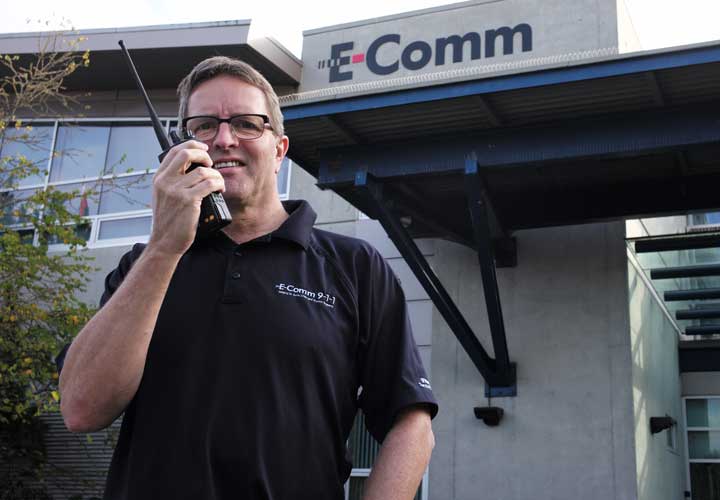First broadcast
First broadcast on new radio network clear as a bell


Photo: Blair Kent
A landmark first broadcast over the new Lower Mainland radio system currently in development went off without a hitch at the end of the summer between a North Shore mountaintop pilot site back to Vancouver. Both audio quality and coverage were rated as extremely positive, two primary objectives of the radio replacement initiative known as the Next Generation Radio Program (NGRP). The tests are considered a significant step forward for the NGRP which is expected to be fully rolled out by the end of 2017.
“We were very pleased with the results of the first transmissions over the new radio system,” said Mike Webb, E-Comm’s vice-president of Technology Services. “Testing went seamlessly thanks to the efforts of our wireless and network teams, who are already working on the next phase of testing key functions and design capabilities to ensure the new system meets the needs and expectations of first responders and the public safety community.”
“We were very pleased with the results of the first transmissions over the new radio system.”
Mike Webb,
E-Comm Vice-President of Technology Services
The first broadcast over the new network followed months of technical activities including switching backhaul Internet Protocol networks to new technology in order to provide efficient and robust communication paths to radio sites. The NGRP team is currently involved with pilot testing, with a total of eight sites now in service. The comprehensive testing phase is scheduled to be complete by the end of the year.
Richmond Fire-Rescue Chief John McGowan, chair of the tri-service emergency responder working group overseeing the radio replacement initiative in partnership with E-Comm, reiterated the NGRP working group’s commitment to implementing a best-in-class digital network.
“As the NGRP continues to gather momentum, the top priority remains thorough testing through each phase of development to ensure a smooth transition to the new radio system commencing in 2016.”
John McGowan,
Richmond Fire-Rescue Chief

Photo: Blair Kent
“As the NGRP continues to gather momentum, the top priority remains thorough testing through each phase of development to ensure a smooth transition to the new radio system commencing in 2016,” emphasized Chief McGowan. “This is a significant enhancement to public safety infrastructure, and as we move into the expanded phase of pilot testing it will be critical to ensure the network delivers the level of performance, security and audio clarity that I know it is capable of providing for our region.”
Pilot testing started in October. Over 45 days, more than one-thousand test transmissions and scenarios will be completed. This will involve over-the-air testing in partnership with agencies, who will provide feedback prior to the project proceeding to the next phase.
The current regional radio network (used by various police, fire and ambulance personnel throughout the Lower Mainland and Fraser Valley) is being replaced with a new system based on digital radio technology known as Project 25 (P25) in the 700 MHz band. This technology is considered best in class and has been endorsed by the Lower Mainland emergency services community. P25 is being widely adopted by public safety agencies across North America.

